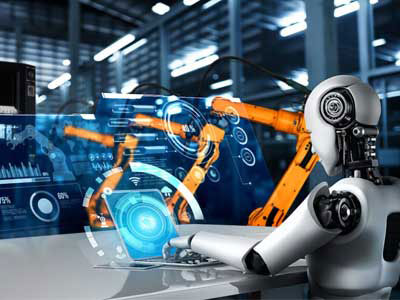Key Takeaway
In industrial robotics, programming languages like C, C++, and Python are commonly used. C and C++ are preferred for low-level control and real-time operations due to their performance efficiency. Python is popular for its simplicity and is often used for higher-level programming, such as AI and machine learning applications. These languages enable precise control over robotic arms, automation processes, and integration with other industrial systems, making them essential in the robotics industry.
C/C++ in Robotics
In robotics, C/C++ programming languages are foundational for their efficiency and control over hardware. They offer low-level access to hardware components, making them ideal for real-time systems in robotics. C/C++’s ability to manage memory and optimize performance suits tasks like sensor data processing, motor control, and decision-making algorithms. Their robustness and versatility support the complex needs of robotics applications, ensuring reliable operation and precise control over robotic systems in various industrial and research settings.

Python for Robotics Applications
Python’s simplicity and versatility make it a popular choice in robotics. While it might not match the performance of C/C++, Python shines in rapid prototyping and ease of use. This is crucial for developing and testing new ideas swiftly. Python is widely used for scripting, automation, and high-level behavior control in robotics. Its extensive libraries, such as NumPy, SciPy, and OpenCV, facilitate implementing complex algorithms for tasks like image processing and machine learning. For instance, a robot with vision capabilities can use Python to process images and make decisions based on its visual input.
Moreover, Python’s compatibility with the Robot Operating System (ROS) enhances its appeal in the robotics community. ROS allows seamless integration with various hardware and software components, making Python an excellent choice for tasks requiring flexibility and rapid development. Researchers and developers favor Python for its ability to handle complex tasks with relatively simple code. Its extensive support and community resources further boost its utility in robotics, making it a go-to language for many in the field.
ROS (Robot Operating System)
The Robot Operating System (ROS) is a flexible framework for writing robot software, providing tools and libraries to create robust applications. While not a programming language itself, ROS supports multiple languages, notably C++ and Python. ROS’s modular architecture allows developers to write and reuse code easily, which is beneficial in complex systems where different components need to work together seamlessly. For example, performance-critical tasks can be handled with C++, while high-level decision-making can be done using Python.
One of the biggest advantages of ROS is its extensive community and wealth of available resources. From motion planning and perception to simulation, ROS offers packages and tutorials that significantly accelerate the development process. This support helps developers build scalable and flexible robotic systems efficiently. Embracing ROS means leveraging a vast ecosystem that fosters innovation and collaboration, making it a valuable tool for anyone working in robotics.
Specialized Robotics Languages
In addition to general-purpose languages like Python and C++, specialized languages play a crucial role in robotics. Languages such as VHDL and Verilog are used for programming field-programmable gate arrays (FPGAs), essential for high-speed processing in robotics. These languages offer features and abstractions tailored to simplify complex robotic tasks, ensuring efficient development and deployment of applications, especially in industrial settings where tasks are repetitive and optimized.
Another notable example is RAPID, used by ABB for programming industrial robots. Specialized languages are designed to integrate seamlessly with specific hardware, providing tools and functionalities that meet the unique needs of industrial robotics. Learning these languages can give engineers an edge in working with particular systems and manufacturers. These skills are highly valuable in industrial environments, where precision and efficiency are paramount.
Future of Robotics Programming
The future of robotics programming is brimming with potential, driven by advancements in technology. New programming languages and frameworks are emerging to meet the evolving needs of the industry. For instance, languages focusing on artificial intelligence and machine learning, such as TensorFlow and PyTorch, are becoming increasingly important in robotics. These languages enable robots to learn and adapt, enhancing their capabilities significantly.
Advancements in cloud computing and edge computing are also shaping the future of robotics. These technologies allow robots to process vast amounts of data and make real-time decisions, paving the way for more autonomous and intelligent systems. Staying updated with these trends and continuously learning new skills will be crucial for engineers to remain relevant in the rapidly evolving field of robotics. The dynamic nature of the industry makes it an exciting area to work in, with endless opportunities for innovation and growth.
Conclusion
Programming languages are the backbone of industrial robotics, enabling engineers to bring robots to life and perform complex tasks with precision and efficiency. By mastering languages like C/C++, Python, and ROS, and staying updated with emerging trends, you’ll be well-equipped to contribute to the exciting world of robotics. Whether you’re developing low-level control systems or high-level behavior algorithms, these languages provide the tools you need to succeed. Keep exploring, stay curious, and embrace the future of robotics programming.
